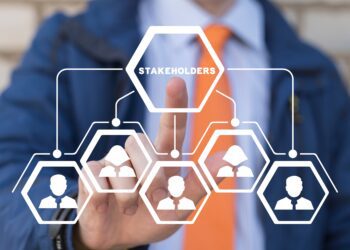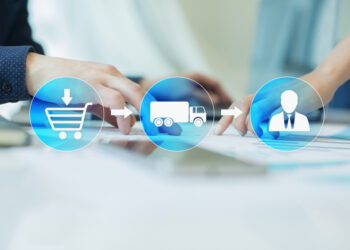Tariffs have been dominating headlines as the new US administration drives sharp policy changes. In April, the United States announced a slew of reciprocal tariffs on almost all of its trading partners.1 Goods from China will now attract a cumulative tariff hike of 125%. Most other countries and the European Union will face 10% tariffs for a period of 90 days to enable trade negotiations. Tariffs worth 25% are already in force against Mexican and Canadian goods, with some exemptions2—energy imports from Canada will attract a lower rate of 10%. Tariffs on countries, as a whole, are in addition to product-specific ones such as 25% tariffs on all aluminum and steel imports into the United States.
These measures will raise the average US tariff rate to levels not seen since the early part of the 20th century.3 And it will not be without retaliation, with China announcing a cumulative 84% tariff hike on US goods.4 So, what will be the overall impact of all this on the US economy? In the near term, these tariffs will likely raise inflation without increasing domestic production. This, in turn, may slow the pace of rate cuts by the Federal Reserve (Fed) even if the inflation turns out to be transitory.5Second, as consumers anticipate inflation to rise, they may frontload some spending in 2025.6 But, as rising prices hit purchasing power, consumer spending growth will likely slow next year.7 Finally, what is also worrying, now, is the lack of clarity on the final tariff framework itself. This uncertainty is starting to weigh on consumer and business sentiment.8 Key equity indices have declined, and the US dollar has weakened since February 2025.9
Tariffs will likely lead to higher inflation
A tariff is a tax paid by importers who will likely pass on at least some part of this added cost to their consumers. Even if the imported good is an intermediate product, the impact of a tariff gradually filters through the value chain into the final product itself. This is not yet evident in the inflation data, so far, as some of these tariffs came into force only in March. However, it is likely that some of the increase in goods inflation in the first two months of 2025 can be attributed to upcoming tariffs.10
Worries about tariffs are forcing inflation expectations up. The University of Michigan’s one-year-ahead inflation figure surged to a 28-month high of 4.9% in March.11 The Federal Open Market Committee, in its median view in March, expects core personal consumption expenditure inflation—which excludes food and energy prices—to be 2.8% this year, up from its projection of 2.5% a quarter back.12
A rise in inflation may turn out to be transitory, especially if a onetime tariff hike slows aggregate demand growth in the economy, and inflation expectations remain anchored.13 But, a series of tariff rate increases, including responses to trade partners’ retaliation, may lead to a more sustained increase in consumer prices over time.
Consumer spending growth will likely slow due to tariffs
In 2024, the average tariff rate in the United States was 3.3%. Yet, this rate is set to increase this year if recent tariff hikes are made permanent. Deloitte economists, in their baseline forecasts, have modeled an increase of five percentage points in the average tariff rate this year onward.16 This scenario assumes that there will be rollbacks on certain tariffs as countries engage with the United States for trade deals. As tariffs rise, consumers will expect prices of goods—especially durables like cars—to increase. In such a scenario, they will frontload some spending this year. However, as rising inflation dents their purchasing power, consumers will cut back, leading to lower spending growth in 2026 (figure 2).
If the average tariff rate rises by 10 percentage points—double of what is assumed in the baseline—the impact on consumer spending and wider economic growth will likely be more severe (figures 2 and 3). The average tariff rate hasn’t been that high—as assumed in this downside scenario—since World War II.17 For reference, 25% tariffs on Canada and Mexico, along with 20% additional trade tariffs on China would raise the average tariff rate by just under 10 percentage points.18 With inflation being higher in this scenario compared with the baseline, the Fed will likely hold off on any rate cuts till 2026.
The reciprocal tariffs announced on April 2, 2025, would, however, push the average tariff rate even higher. Estimates by the Budget Lab at Yale University put this increase in the average tariff rate at over 20 percentage points.19 That’s twice the increase in the tariff rate assumed in the downside scenario and will push the rate to levels last seen in 1909.20 Such a high average tariff rate is expected to have a larger impact on inflation than in the baseline and downside scenarios mentioned above. This, in turn, will impact consumers’ purchasing power by more than expected, thereby leading to lower growth in consumer spending and the wider economy than in the scenarios highlighted in figures 2 and 3. Higher inflation and lower growth will also make the Fed’s work tougher, given its dual mandate of stable prices and maximum employment.21












